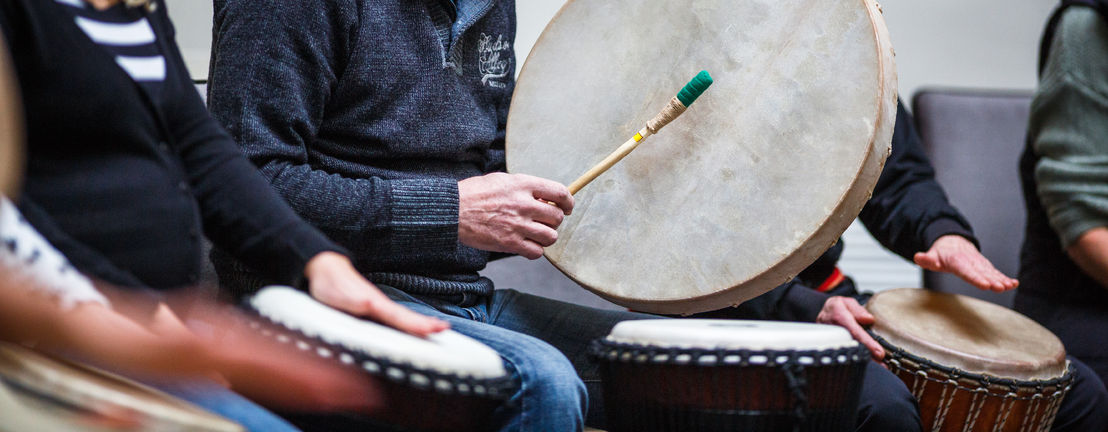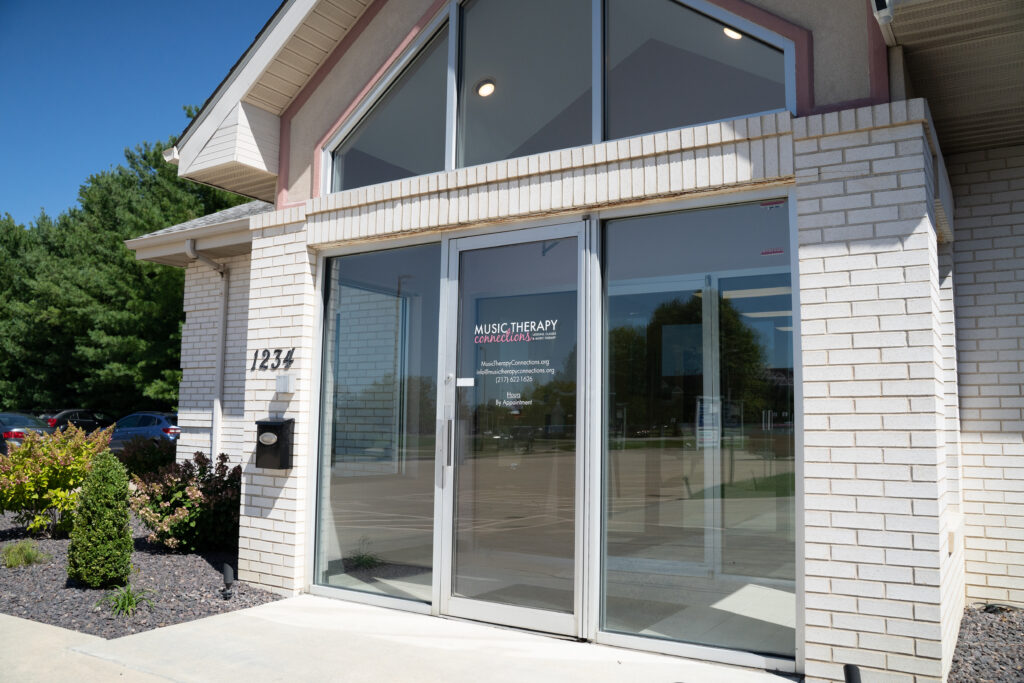
This week, we’re featuring an application that could be implemented for individuals in a rehabilitation setting. Employing paddle drums and an upbeat song, this application may be used to motivate clients to increase their range of motion, while also increasing duration of movement at the same time.
Possible Goals Addressed:
- Increasing gross motor movement
- Crossing midline
- Increasing range of motion
- Increasing duration of gross motor movement
- Strengthening palmer grasp strength
Music used:
Leiber, J. & Stoller, M.. (1953). Hound dog [recorded by Big Mama Thornton]. On Night Mare [LP]. Los Angeles, California: Radio Recorders Annex.
Materials (optional):
Paddle drum
Paddle drum mallet
Small hand-held rhythm instrument that can be played with one hand (tambourine, bells etc.)
Application:
The music therapist will introduce the paddle drum to the client and demonstrate how it’s played. After handing out mallets to each client, the music therapist will begin singing “Hound Dog” while tapping out a beat with one hand playing a small rhythm instrument and with the other free hand, holding out the paddle drum to the clients. The music therapist will hold out the drum to the clients as a target for the client to hit.
Depending on the needs of each client, the therapist may vary the position of the drum or gradually move the drum from one direction to the other to increase the client’s range of motion.
Lyrics:
You ain’t nothin’ but a hound dog
Cryin’ all the time
You ain’t nothin’ but a hound dog
Cryin’ all the time
Well, you ain’t never caught a rabbit and you ain’t no friend of mine
Well they said you was high-classed
Well, that was just a lie
Yeah they said you was high-classed
Well, that was just a lie
Well, you ain’t never caught a rabbit and you ain’t no friend of mine


